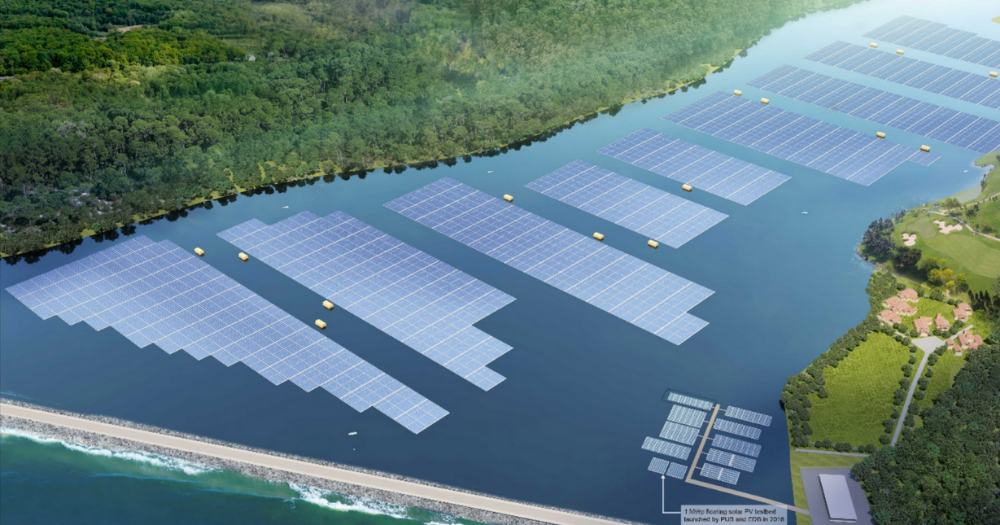A huge floating solar farm over Tengeh Reservoir will begin construction, according to PUB and Sembcorp, on August 18.
Clean energy to power water treatment plants
The solar photovoltaic (PV) system will span an area of around 45 football fields, which is over 32ha.
It will have a capacity of 60 megawatt-peak (MWP). The energy generated from the solar farm is expected to power about 16,000 four-room HDB flats.
This makes this solar PV system in Singapore one of the world's largest inland floating solar systems.
When the project at Tengeh Reservoir begins full commercial operations in 2021, the system will "serve the dual purpose of water catchment and electricity generation".
The clean energy generated from the solar system will help power PUB's local water treatment plants.
This will offset seven per cent of PUB's annual energy needs.
Previous environmental studies were carried out to ensure the solar system atop Tengeh Reservoir will have minimal impact on the water quality and biodiversity within the resevoir.
Solar energy is Singapore's most viable shot at renewable energy. However, due to the country's small land area and dense urban landscape, finding locations to install large-scale solar systems is challenging.
Aside from building rooftops and vertical spaces, Singapore's water bodies and reservoirs thus serve as a good spot to catch sunlight.
Aditionally, solar PV systems help to reduce Singapore's dependency on fossil fuels and production of carbon emissions.
Outfitted with smart technology
The solar system is incorporated with various smart technology to enhance operations.
It is backed by a digital monitoring platform which includes safety cameras, 'live' video monitoring and alerts which help track environmental factors such as wind speed and ambient temperature.
The system is also able to detect any abnormalities that could precede overheating or fire hazards.
Staff will be able to monitor the system via a mobile app. This enables maintenance teams to be deployed swiftly in the event any problem occurs.
The components of the system have also been specifically designed and selected to suit Singapore's climate conditions.
These specially chosen components can help maximise energy generation, minimise environmental and water quality impact, and be durable enough to have a lifespan of 25 years.
Top photo from PUB and Sembcorp
If you like what you read, follow us on Facebook, Instagram, Twitter and Telegram to get the latest updates.
